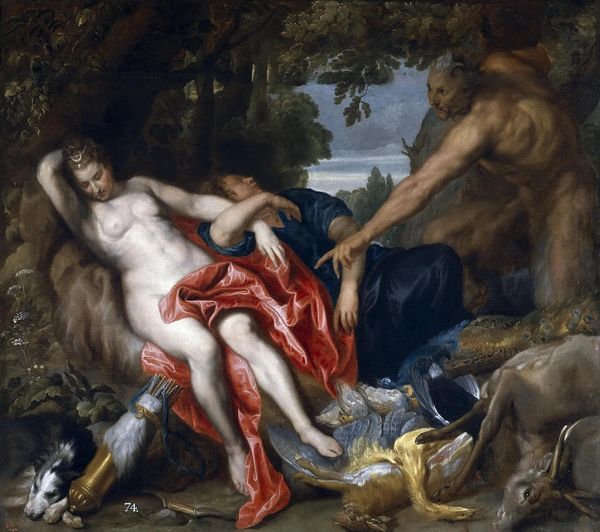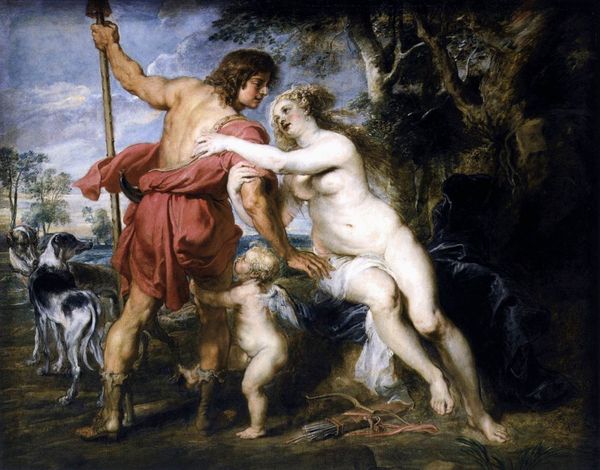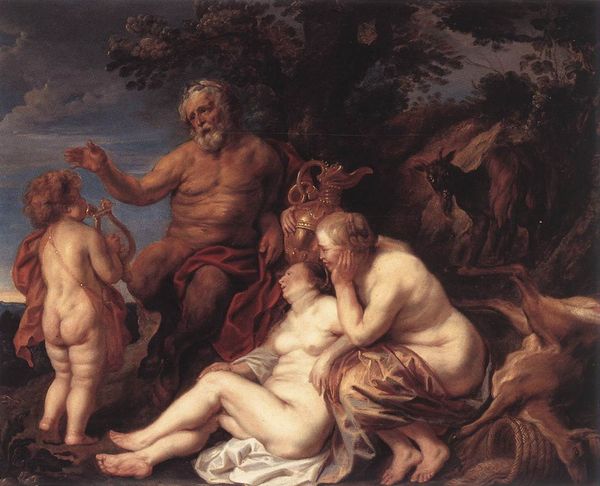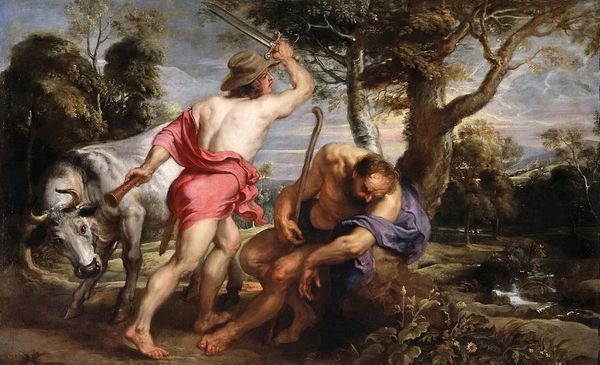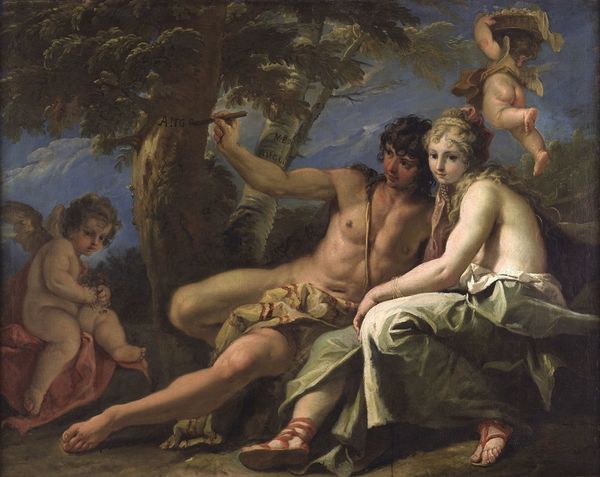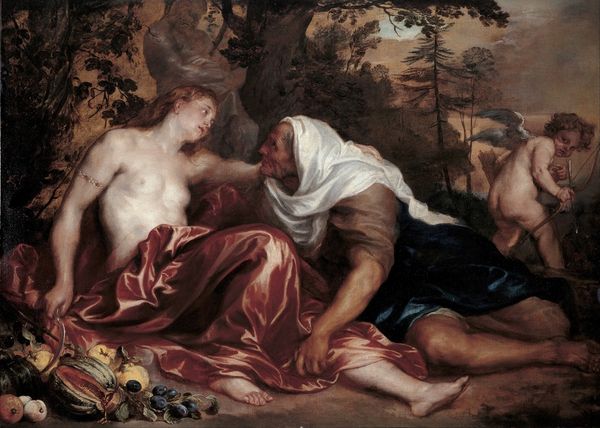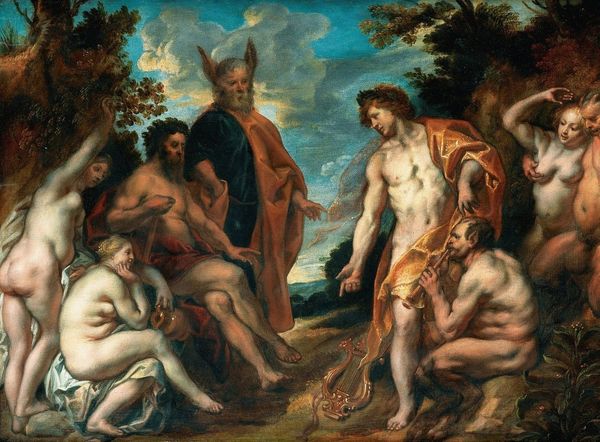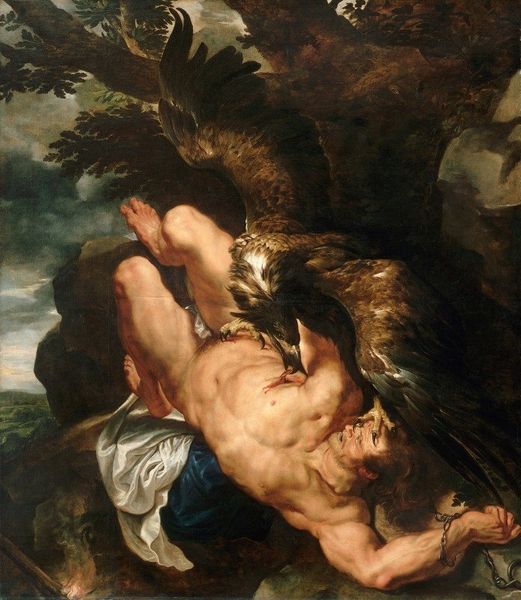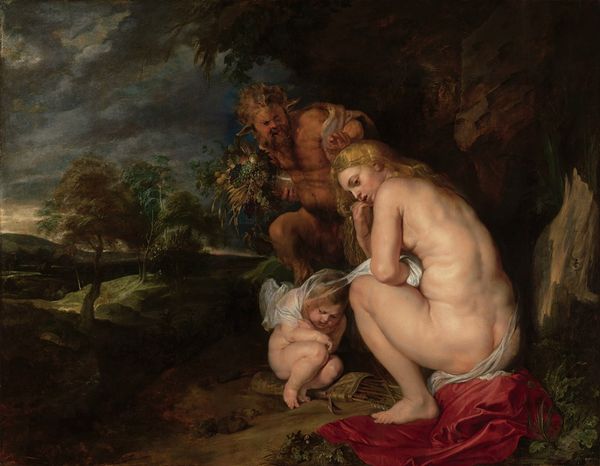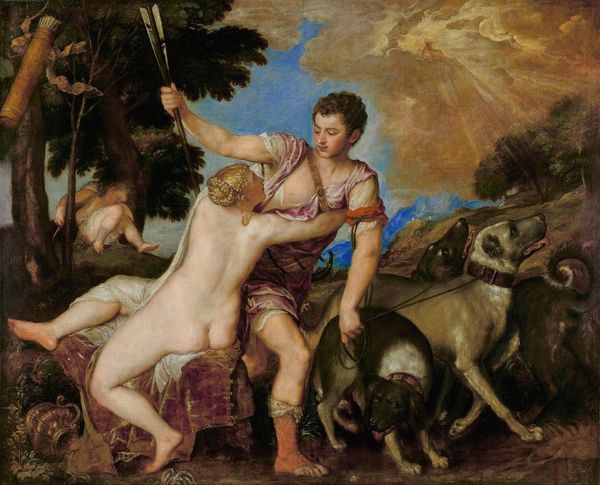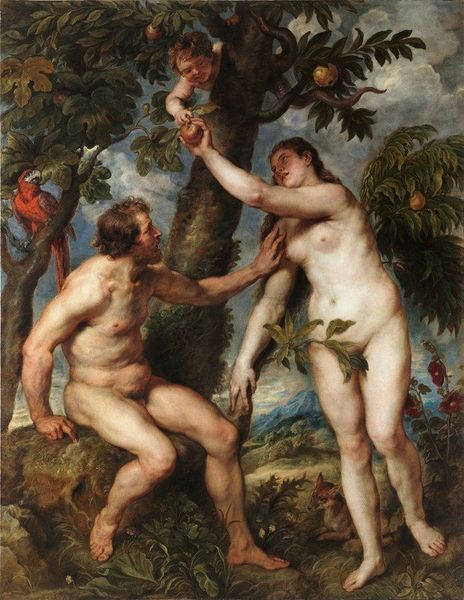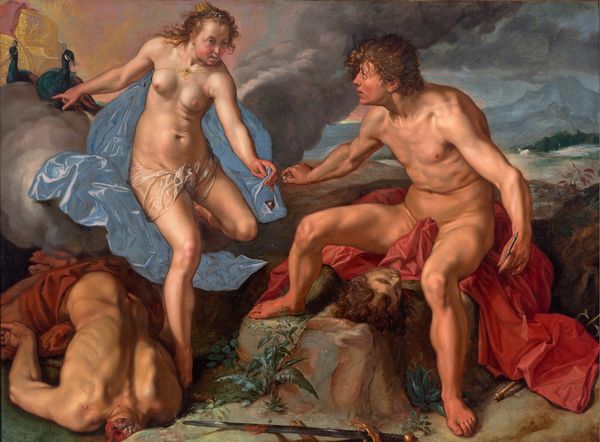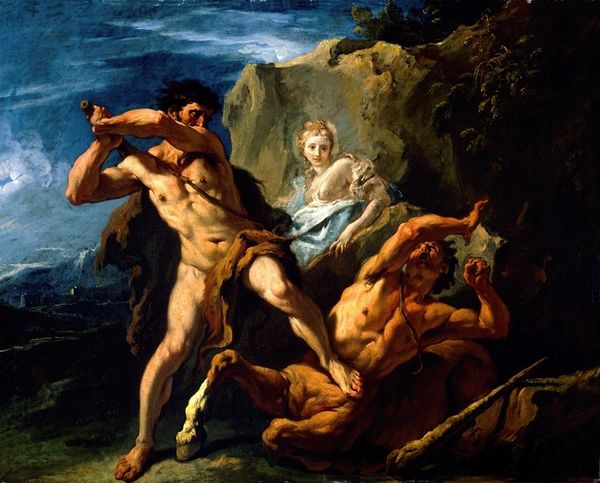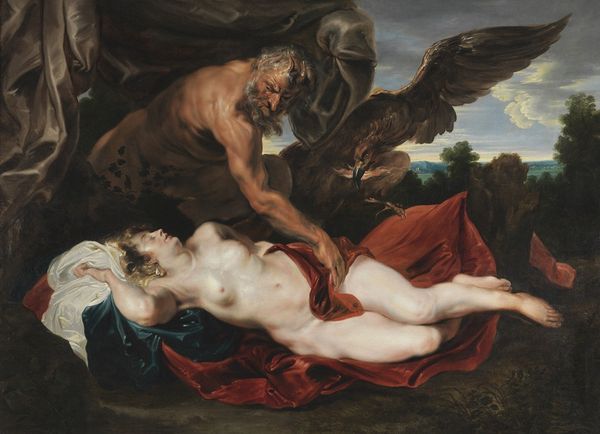
painting, oil-paint
#
portrait
#
allegory
#
narrative-art
#
baroque
#
painting
#
oil-paint
#
figuration
#
oil painting
Copyright: Public domain
Curator: Here we have Anthony van Dyck’s “Saint Jerome.” Although undated, its stylistic features place it firmly within his Baroque period. Editor: My first impression is striking: the texture of the aged skin of Jerome is visceral, contrasted with the youthful cherub. The red robe spills across the canvas, its drapery hinting at concealed forms beneath. Curator: Indeed, the contrast is significant. Van Dyck, deeply embedded in the artistic milieu fostered by figures like Rubens, masterfully employed oil paint here to showcase Jerome as both a learned scholar and a vulnerable, aging man. Consider the setting itself, evocative of ascetic life yet painted with such dramatic flair. Editor: And consider the symbolism embedded in the materiality. The pigments themselves, derived from specific sources and ground with care, contribute to the narrative. Red, especially, was historically a costly color—reserved for rendering royalty and religious figures. Its deployment signifies Jerome's spiritual significance, but also the financial investment behind its commission. The canvas weave and layers of the paint application must've been carefully chosen to project meaning. Curator: The Church's role, particularly during this period, greatly influenced the commission and distribution of such art. Jerome's representation – scholar, translator, saint – served didactic purposes and reinforced the power and legacy of religious teachings, with the paintings functioning almost as religious propaganda. Editor: It is not solely a divine projection, however. The tangible, human details disrupt that illusion. You can almost feel the roughness of the beard. And there's the lion! How fascinating is this companion, so carefully staged? Are they sharing their rest time? Curator: The lion, of course, is an iconic symbol of Jerome. It grounds him in hagiography while highlighting his spiritual authority and connects the image back to the canonical narrative, and thus legitimizing the vision presented here. Editor: So even in its material construction— the cost of pigment, the labor invested in creating it— the artwork is intertwined with stories about cultural and financial power structures, no matter its intentions. Curator: Precisely! The art doesn't simply *represent* cultural beliefs, but is actively woven *into* their fabric. It has meaning only because we agree about meaning. Editor: Looking closer has made the labor involved so evident! It leaves me thinking about how representations of power are inextricably linked to very tangible labor conditions of the period. Curator: Absolutely, it’s a testament to the artist’s technical skill and the intertwined cultural narratives that are perpetually evolving even today.
Comments
No comments
Be the first to comment and join the conversation on the ultimate creative platform.
